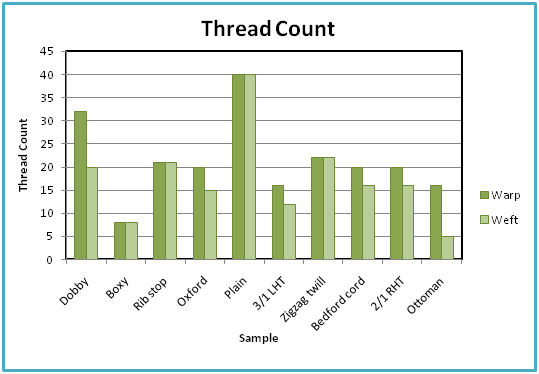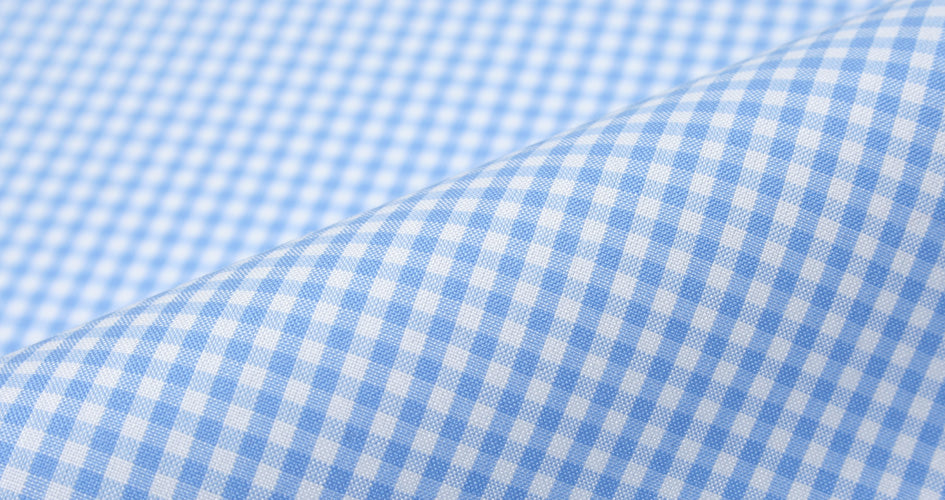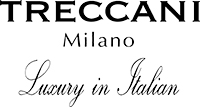Custom Dress Shirts: Treccani Milano Thread Count Debunked Posted on 21 Oct 11:26
Thread count is one of the first ways one can determine the worth of a fabric or sheet.
But is it telling you the truth?
After some research Treccani Milano discovers the secret.

The basics when discussing thread count or cotton count are the weft, warp, single-ply, two-ply, and compact vs normal yarns.
When someone refers to the count of a fabric they are usually referring to the construction and yarn specifications. This includes the weight per unit length or how many threads are in one square inch on any given area of the fabric. Often a small estimate of the thread count as a whole.
The weft and warp are what people in the industry use to the describe the two main directions of yarn. The warp threads run vertically while the weft yarns run horizontal. Those are the only two distinctions among the thread but together can take many forms and follow many patterns.
Ply is how many yarns are twisted together to make a single thread. Therefore when someone refers to one-ply they mean one yarn has been twisted to create a thread and two-ply involves two pieces of yarn twisted together. Thus it all determines the quality of the fabric.
Lastly compact yarn, as you could guess, is smoother and finer than normal yarn. These two variations are not relevant to the thread count but are another indication of quality. A low thread count with compact yarn can still yield a fairly fine piece of fabric or sheet.

Now let us go through the main types of thread styles:
Broadcloth, Poplin: Two different names but this thread is the same. It is characterized by its construction pattern, each weft yarn passes over one warp yarn similar to that of a chessboard to create a square like pattern. This thread is usually fairly strong, durable, and resistent to shrinkage. Because of its great overall longevity and flexibility it is most commonly used for shirts.
Pinpoint, Oxford & Basket Weave: This threading style is very simple. The usual difference between pinpoint and oxford is the type of woven yarn used. The weft thread passes above two weft threads which are quite close together before passing under the next two in a repetitive pattern. Thus where the basket weave comes into effect.
Twill, Gabardine, Cavalry & Herringbone: These are all the same thing just different components of one whole. The twill is the type of weave. Gabardine & Herringbone are just creations of the weave. This pattern has the weft yarns passing over many warp yarns, the next segment continues the same pattern but begins one warp later each time.

Now that we have our yarn patterns straight lets go over the basics of thread count, and why it important, if it is at all.
Yarn or thread count is widely used in many industries to determine the quality, and therefore cost, of each product. Yarn count is described as "a numerical value, which express(es) the coarseness or fineness (diameter) of the yarn and also indicate the relationship between length and weight (the mass per unit length or the length per unit mass)of that yarn". See above for thread count.
The yarn size refers to the thickness of each piece of yarn, and ply is the number of individual yarns used as a strand. This is where we get one-ply and two-ply.

Now there is a lot of controversy over what is a good thread count and what is an unnecessarily high count. The experts state that a good thread count is about 400. Anything more and the company is fooling you into thinking there is better quality than 400. An expert in the industry explains, "In reality, to achieve a higher thread count manufacturers are generally using a lower grade of cotton that becomes very thin when spun," Tannen explained to us. "They then twist this thread around itself to create a `multi-ply’ thread. When they use 2-ply thread and weave it to a theoretical 300-thread count (150 horizontal, 150 vertical) they call it a 600 thread count sheet and sell it that way.”
Thus companies are using two-ply and even four-ply and calling it 800 or even 1000 thread count making it seem like the best option as thread count seemingly equals quality. Customers must be wary of these techniques when picking out bed sheets or the like.
Companies have also been known to apply waxes and polishes to sheets before being shipped out that trick the consumer into believing the fabric is incredibly soft, which will unfortunately break down after a wash or two.
Thread count is not what it used to be and staying informed and up to date on the newest tricks is your only hope to get the best quality. Treccani Milano also recommends looking at the stitches in any fabric to determine quality. If they are close or invisible, with no visible tear when lightly tugged, this will ensure a decent quality fabric. That is just another way to determine strength and comfort if the thread count seems unreliable.
Happy Thread Counting!
References:
http://www.onlineclothingstudy.com/2013/07/what-is-yarn-count-in-fabric.html
http://propercloth.com/reference/thread-count-ply/
http://missourifamilies.org/features/materialarticles/feature8.htm
http://txtilecalculation.blospot.ca/2014/11/relation-between-yarn-count-and-fabric.html
http://www.bespokeshirtmakers.com/html/faq_fabric.asp
https://www.hugandcrye.com/#!/dress-shirt-fabrics
http://www.businessinsider.com/how-to-buy-sheets-by-thread-count-2014-12
Image sources:
http://denisebrain.blogspot.ca/2012/11/fabric-term-of-week-basic-weaves.html
http://www.alibaba.com/
http://textilelearner.blogspot.ca/2014/08/study-on-thread-count-and-thread-density.html


